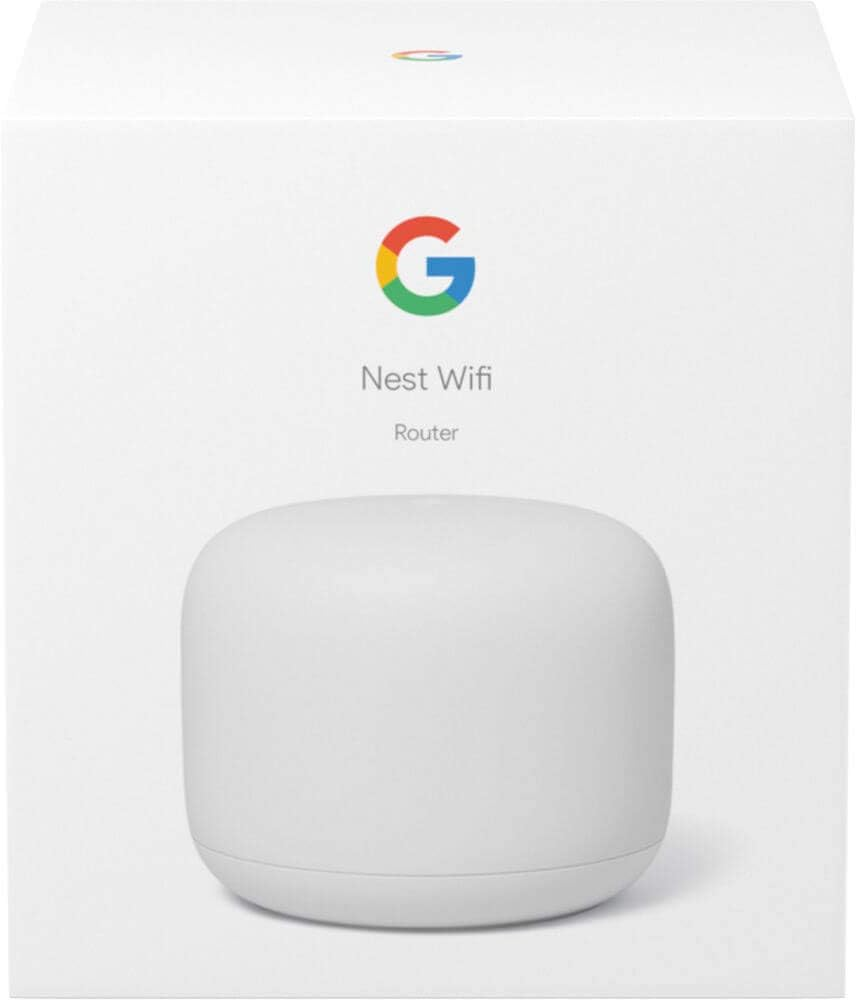If you’ve ever struggled with Wi-Fi dead zones or inconsistent connections, you know how frustrating it can be. Whether you’re working from a home office upstairs or trying to stream a movie in the basement, having reliable Wi-Fi coverage everywhere is essential. Traditional single routers often can’t cover an entire home or larger office space, leading to weak signals in distant rooms. Fortunately, mesh Wi-Fi systems are here to solve that problem and boost Wi-Fi coverage across your whole space. In this article, we’ll explore what mesh Wi-Fi is, how it benefits both home and office environments, and highlight some of the best mesh systems available — with a special focus on Google Nest Wi-Fi, our featured product for reliable whole-home internet.

Understanding Mesh Wi-Fi and Why Coverage Matters
A mesh Wi-Fi system is a modern solution designed to blanket your home or office with strong wireless coverage. Instead of relying on a single router to broadcast signal everywhere (which can result in weak coverage at the edges of your space), a mesh system uses multiple nodes or “points” spread throughout the building. These nodes work together as a unified network, sharing the same network name and password. The result is seamless coverage as you move around — your device automatically stays connected to the nearest node with the best signal, without dropping the connection or requiring you to switch networks.
Coverage matters because so much of our work and leisure depends on stable internet. In a home setting, think of smart TVs, laptops, smartphones, tablets, and smart home devices all vying for bandwidth. In an office, add video conferencing and numerous workstations to that mix. If the Wi-Fi signal is weak in one corner of the house or office, devices there might load pages slowly or drop off the network entirely. Mesh Wi-Fi helps eliminate these dead spots by placing nodes in those weaker areas, effectively spreading out the wireless signals. For example, a typical mesh kit might include a base unit and one or two satellite units — together, they can cover a far larger area than a single traditional router. Google’s Nest Wi-Fi system, for instance, is advertised to cover up to 5,400 square feet with a three-pack setup, ensuring even large homes or office suites stay connected in every room.
Another advantage of mesh is handling many devices. Traditional routers can get overwhelmed if dozens of gadgets are connected at once, which is increasingly common with smart homes and busy offices. Mesh systems are typically better at load-balancing multiple devices because each node helps carry part of the Wi-Fi load. Reliable internet isn’t just about raw speed from your provider — it’s also about how well your local network delivers that speed to every device without interruptions.

Mesh Systems vs. Traditional Routers (and Extenders)
You might wonder, why not just use a Wi-Fi range extender or a more powerful single router to fix coverage issues? Traditional routers broadcast from one spot, which means the farther you are from the router, the weaker the signal gets. You might have a great connection in the living room where the router is, but a poor one in an upstairs bedroom. Range extenders (also known as repeaters) can help push the signal further, but they often create a second network name (like “MyWiFi_EXT”) and can cut your bandwidth in half because they rebroadcast everything. This can lead to lower speeds or a need to manually switch your device to the extender’s network as you move around.
Mesh Wi-Fi, on the other hand, is a whole-home approach to wireless networking. All mesh nodes are part of a single smart network that communicates behind the scenes. There’s no need for you to jump between networks; the system automatically hands off your connection to the best node as you move about. Compared to extenders, mesh networks offer more extensive, seamless coverage and maintain better speeds since they avoid the inefficiencies extenders introduce. In simple terms, mesh acts like a team of routers all cooperating, whereas an extender is a lone helper that might actually slow things down. Another benefit is ease of management. Many modern mesh solutions are managed through simple smartphone apps that let you see connected devices, run speed tests, or create guest networks with a tap. In contrast, older routers and extenders often require logging into clunky web interfaces. Mesh systems also tend to update themselves and use smarter technology to route data optimally. All this means less fiddling for you and more reliable Wi-Fi throughout your space.
Benefits of Mesh Wi-Fi for Home and Office
Coverage Everywhere
With multiple access points, a mesh network blankets large or multi-story spaces where a single router would fail. By placing nodes strategically (for example, one per floor of a house or at opposite ends of an office), you eliminate dead zones. You can work in any room or even out on the patio and still enjoy a strong signal. A system like Google Nest Wi-Fi can blanket a home with a strong signal in every corner, covering several thousand square feet with ease.
Consistent Speed and Reliability
A well-designed mesh network delivers stable performance across your entire area. Instead of Wi-Fi speeds dropping off as you move away from the router, the nearest mesh node picks up the task and keeps your connection fast. If one path has interference, the network can reroute data through another node to maintain speed. This means fewer dropped video calls and smooth streaming, even in the farthest room from the main router.
Easy Management and Expansion
Mesh systems are user-friendly and easy to manage via mobile apps. It’s simple to monitor connected devices or set up a guest network. The network can update itself to improve over time, so you rarely have to troubleshoot. Need more coverage? You can usually add another node to the system without hassle. This flexibility means your Wi-Fi can easily grow with your needs.

Google Nest Wi-Fi: A Reliable Mesh Solution
Among the many mesh systems on the market, Google Nest Wi-Fi stands out for its blend of simplicity and performance. It’s a popular choice that showcases what a good mesh system can offer.
Simple Setup and Management
Getting Nest Wi-Fi up and running is very easy. Using the Google Home app, you plug in the main unit (router), place the additional point units around your space, and follow a few prompts. In minutes, your network is ready. The app helps find optimal locations for each node and lets you manage the network effortlessly. You can see all your connected devices, run speed tests, or pause the internet for specific devices (useful for family time or meetings) right from your phone. You don’t need to be tech-savvy — if you can follow an app wizard, you can set up Nest Wi-Fi.
Coverage and Performance
Each Nest Wi-Fi unit is quite powerful. The primary router unit can cover up to about 2,200 square feet on its own, and each additional point adds around 1,600 square feet. With a two-pack (router + one point), you get roughly 3,800 sq ft of coverage, and a three-pack extends to roughly 5,400 sq ft. In real homes, this means a Nest Wi-Fi can easily blanket a multi-room or multi-story house with solid signal. It also handles many devices simultaneously. So, whether you have lots of smart home gadgets or a busy family with phones, laptops, and streaming devices, Nest Wi-Fi manages the traffic without breaking a sweat. The system uses intelligent mesh routing to always give your devices the best possible connection available.
Smart Features
One unique aspect of Nest Wi-Fi (the original version) is that the extender “point” units have smart speakers with Google Assistant built in. This means those nodes double as voice assistant speakers — you can ask questions, play music, or control smart home gear via voice. It’s a handy bonus feature that essentially gives you Wi-Fi and smart speaker functionality in one device. Even if you’re not big on voice commands, it shows how Nest Wi-Fi integrates into the smart home ecosystem. (Note: The newer Nest Wi-Fi Pro focuses purely on Wi-Fi performance and does not include built-in speakers.)
Reliability
Once Nest Wi-Fi is set up, it requires little attention. It updates itself automatically to improve security and performance. If one node ever disconnects or loses power, the other nodes still try to maintain your overall network coverage, so you stay online. Many users find that after switching to a Nest mesh system, they seldom need to reboot their router or deal with devices dropping off the network — connectivity just stays solid day in and day out. It’s a set-and-forget solution that quietly optimizes your Wi-Fi in the background.

Conclusion
Upgrading to a mesh Wi-Fi system can make a huge difference in your daily connectivity. Instead of worrying about where your router is or dealing with buffering in certain rooms, you get consistent internet access throughout your home or office. For remote workers, this means you can take video calls from anywhere in the house. For families, it means multiple people can stream or game at the same time without fighting over the “good spot.” And for small businesses, it means a more dependable network that keeps everyone productive and connected.
When it comes to finding the best mesh systems, there are a few great options out there, but Google Nest Wi-Fi is a strong contender that ticks all the important boxes for most users. It provides extensive coverage, easy management, and reliable performance in a very user-friendly package. By eliminating Wi-Fi dead zones, a system like Nest Wi-Fi truly boosts Wi-Fi coverage to the next level. If you’re ready to say goodbye to spotty connections, a mesh system could be the perfect upgrade for your home or office. Mesh networking simplifies your Wi-Fi, making dead zones a thing of the past.
FAQ
-
What is a mesh Wi-Fi system and how does it differ from a traditional router?
A mesh Wi-Fi system uses multiple nodes (or “points”) spread throughout your home or office to create a single, seamless network. Unlike a traditional router that broadcasts from one location (often leaving dead zones), mesh nodes work together to blanket every corner with strong signal, automatically handing your devices off to the best node as you move. -
Can I add more nodes to my existing mesh network?
Yes—most mesh systems, including Google Nest Wi-Fi, are designed to scale. Simply plug in an additional node, use the app to integrate it into your network, and coverage expands immediately without reconfiguring your settings. -
Do mesh systems require professional installation?
No. Mesh Wi-Fi setups are typically app-driven and user-friendly. With Google Nest Wi-Fi, for example, you follow step-by-step prompts in the Google Home app to plug in each unit, name your network, and optimize node placement—no networking expertise needed. -
Will a mesh network improve my internet speed?
A mesh network delivers the full speed provided by your internet plan to every part of your space. While it doesn’t increase the package speed from your ISP, it prevents signal degradation over distance and obstacles, so you get consistent, reliable performance in every room. -
How many devices can a mesh Wi-Fi system support?
Mesh systems are built to handle many connected devices simultaneously. A Google Nest Wi-Fi kit, for instance, can support dozens of smartphones, laptops, smart speakers, and IoT gadgets without significant slowdowns, thanks to intelligent load balancing across nodes. -
What happens if one mesh node loses power or connection?
If a node goes offline, the remaining nodes automatically reroute traffic to maintain network coverage. Your devices stay connected—though coverage in the node’s immediate area may temporarily rely on more distant nodes until you restore power or reconnect that unit. -
Is mesh Wi-Fi more secure than a single router?
Mesh systems often include automatic firmware updates and built-in security features managed through their apps. Google Nest Wi-Fi, for instance, pushes timely updates in the background and offers easy-to-configure guest networks and parental controls, helping keep your network safer without manual intervention.











